Regarding security and privacy, Proton is a steadfast name to remember. The service provides end-to-end encryption for all its products with a zero-knowledge architecture, meaning your data and activities are truly private. The service boasts that even Proton employees can’t see your data. However, don’t start using Proton Mail thinking you are getting all the security and encryption possible. The Mail app must work with other less secure and private services, such as Gmail, Outlook, and whatever your doctor’s office uses.
Once your message reaches Google servers (for instance), it is open to scans for ad targeting, AI model training, and worse. When you email a message with critical financial documents, you should use Proton's email password-protect feature for enhanced encryption. This tacks on an additional layer of security that can be crucial in keeping your most sensitive messages and data secure.
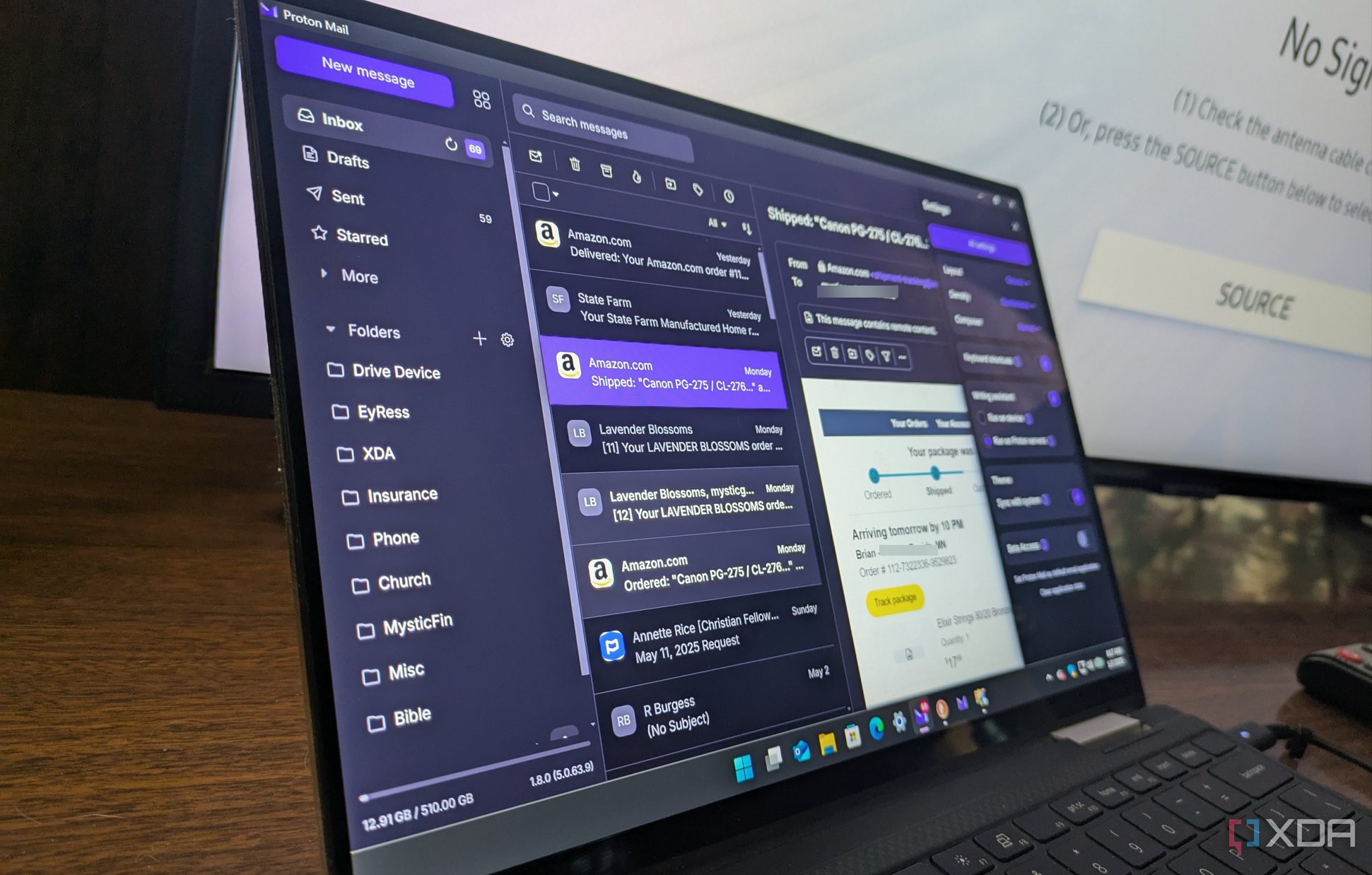
Related
4 reasons I use Proton Mail as the default instead of Outlook on Windows 11
I like Proton Mail so much I make it the default instead of Outlook, and you can too.
5 Enhanced Security
It provides actual end-to-end encryption
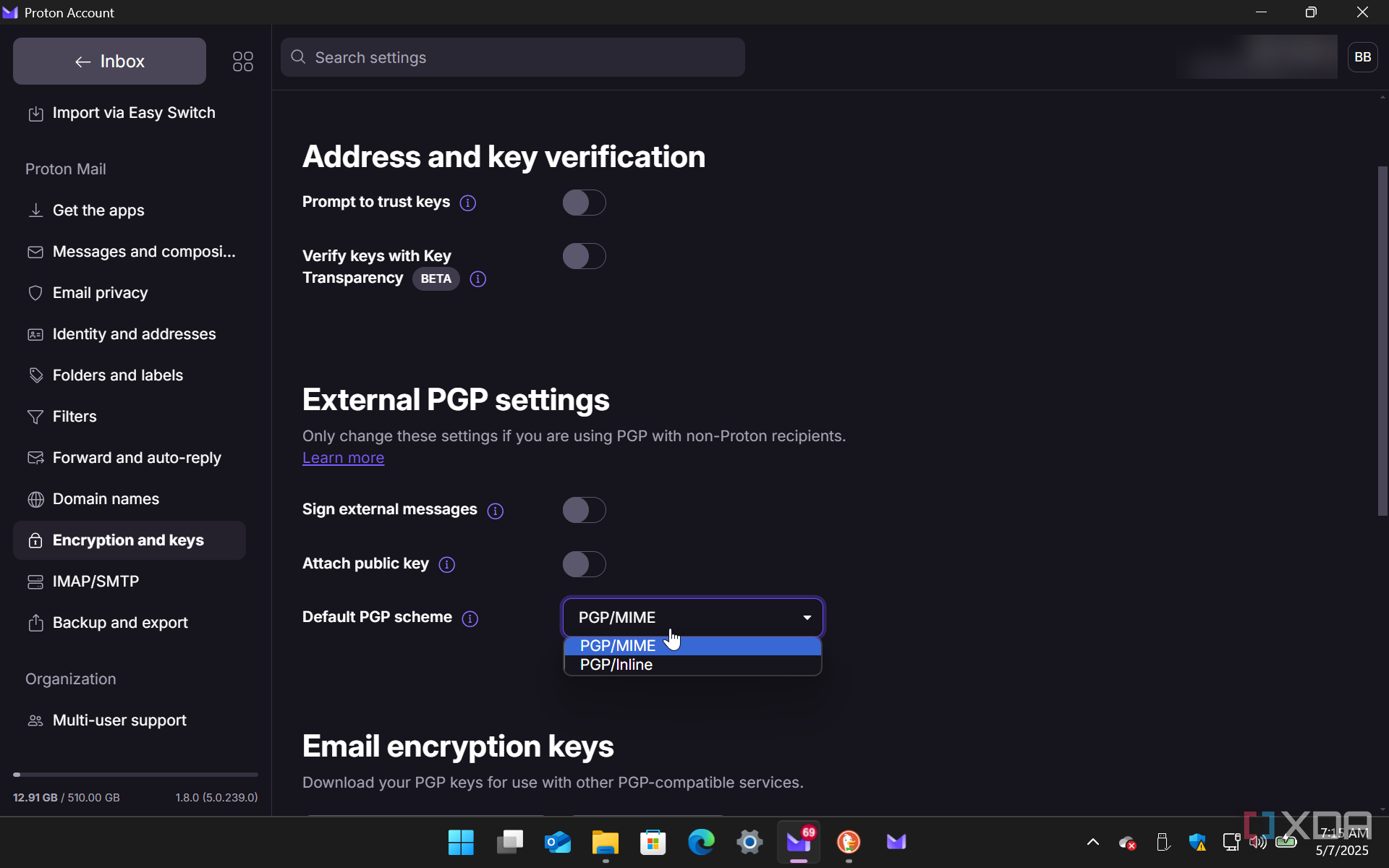
Proton Mail relies on Transport Layer Security (TLS) encryption, which means your email message is protected in transit. Most email services support TLS, which is why Proton works with them. However, once an email message reaches Google servers (for instance), it is open to ad-targeting, AI model training, and worse. The free email services available are free for a reason, and they are not as secure as Proton.
To get the most secure encryption the service provides, you must password-protect your message when sending to those services. This is especially true when sending messages to free accounts like Gmail or Yahoo. Most email services support TLS, and that’s why Proton works with them. However, a password-protected email or Proton Drive file never leaves Proton servers. Also, if an email is compromised, it has password protection and an expiration date.

4 Password not required for Proton Mail users
You don’t need to password-protect files with other Proton users for end-to-end encryption
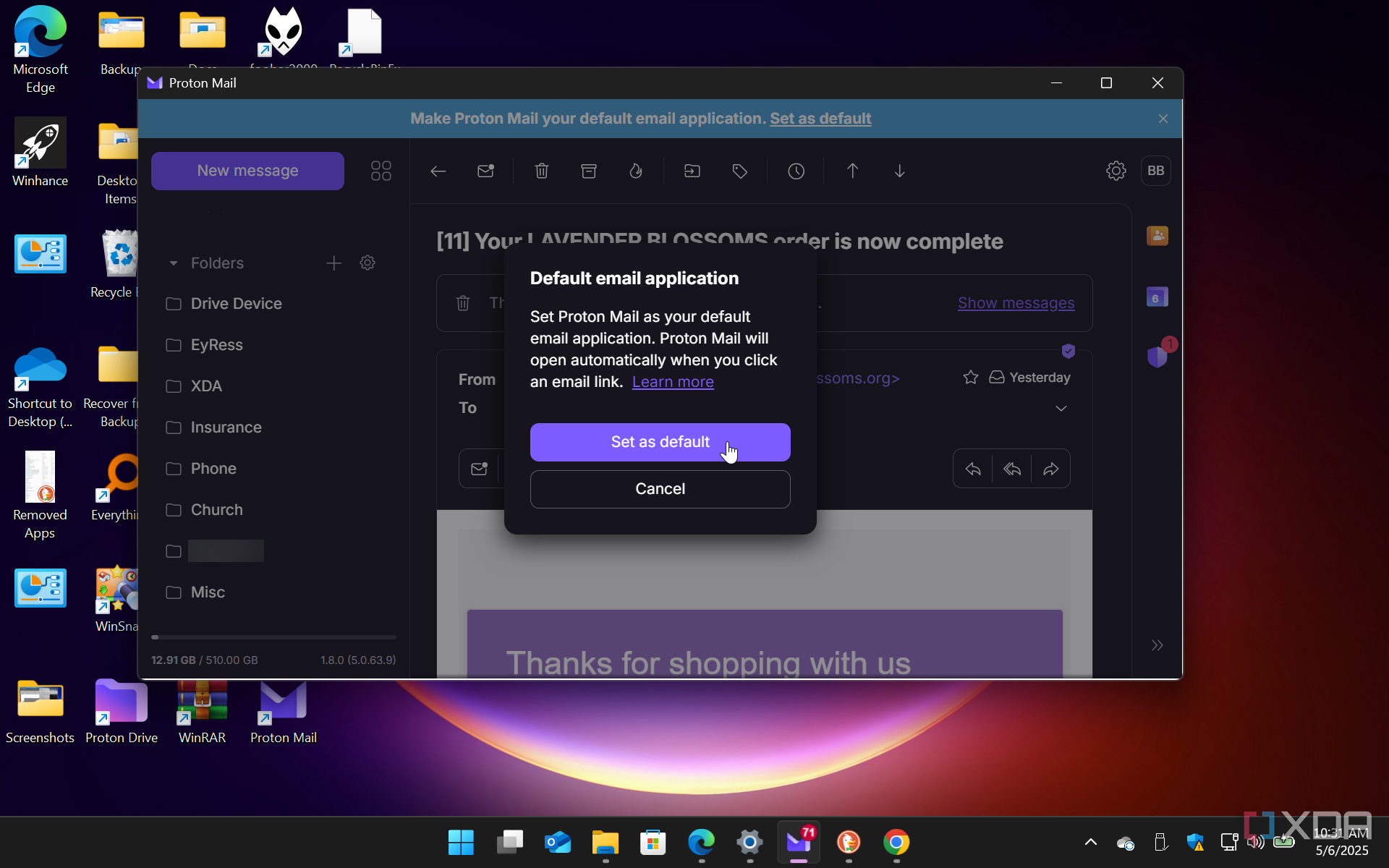
If you send an email from your Proton account or even share a file from Proton Drive to another Proton Mail user, there’s nothing you need to do. True end-to-end encryption is automatic, which makes email privacy and security easier. Of course, there is nothing to stop you from doing it, and there are good reasons to. You might be worried about a user with a shared device. Or, someone in a busy environment where they don’t keep their PC locked when unattended. In the end, password protection is a crucial layer beyond regular encryption. It's also worth noting that before sending your protected email, you can fire up Proton VPN for additional transit layers of protection.
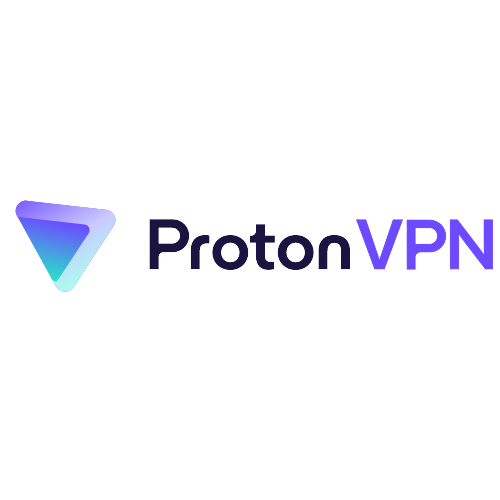
ProtonVPN
Servers 3,000
Countries 69
3 Prevent unauthorized access
Stop middlemen in a compromised email system from viewing your message
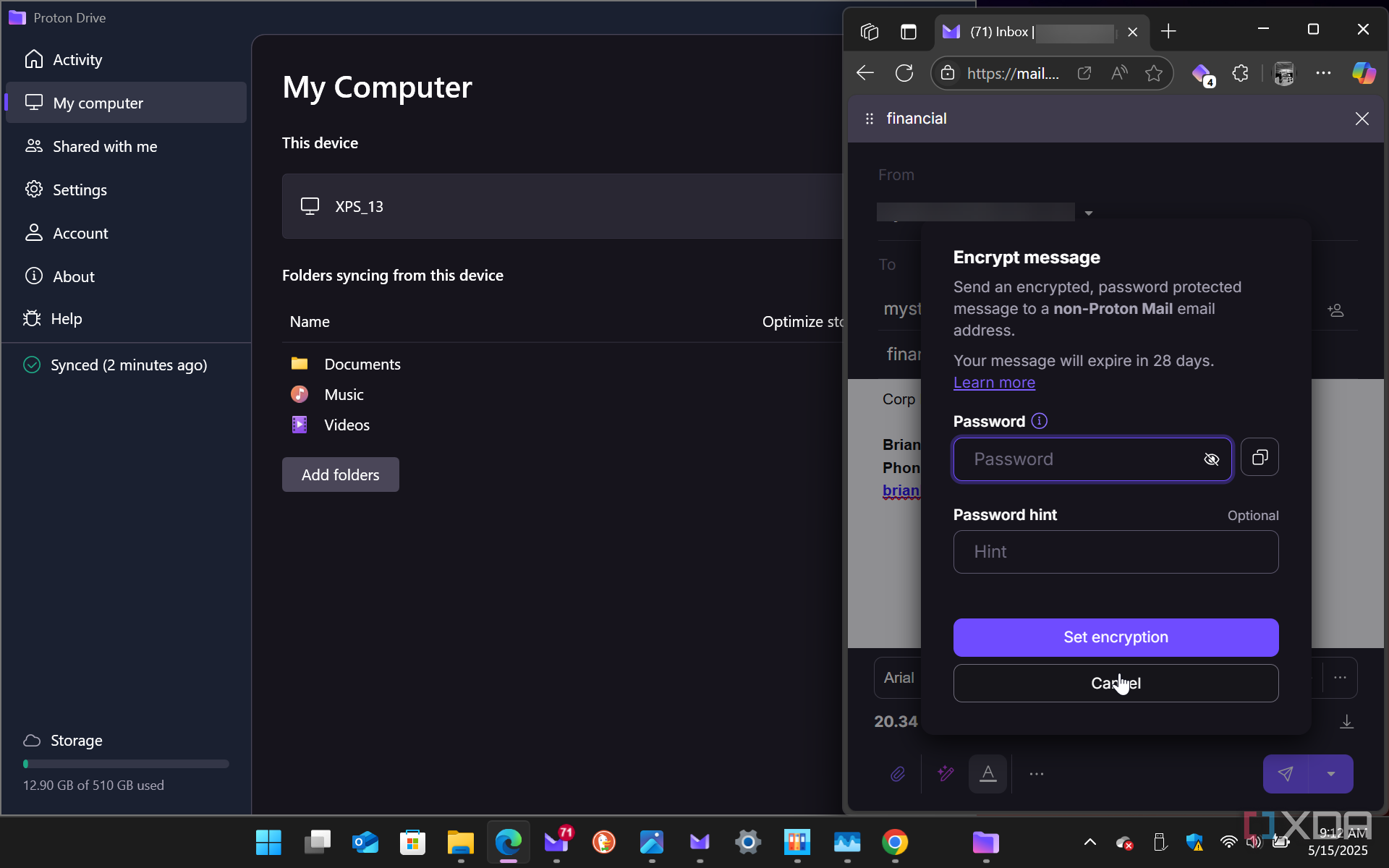
If the recipient's mail system is compromised and a bad actor intercepts a message, the content (including attachments) remains encrypted. If they can open it, it will remain gibberish. This ensures that your most confidential data remains private and secure. So, even if the recipient doesn’t get your message, this extra layer of security protects your sensitive data. In addition, setting an expiration date on the mail protects it since it is automatically destroyed. Usually, a vital email that needs additional security will be read promptly, so it should work out if there isn’t an unreasonable expiration time set.
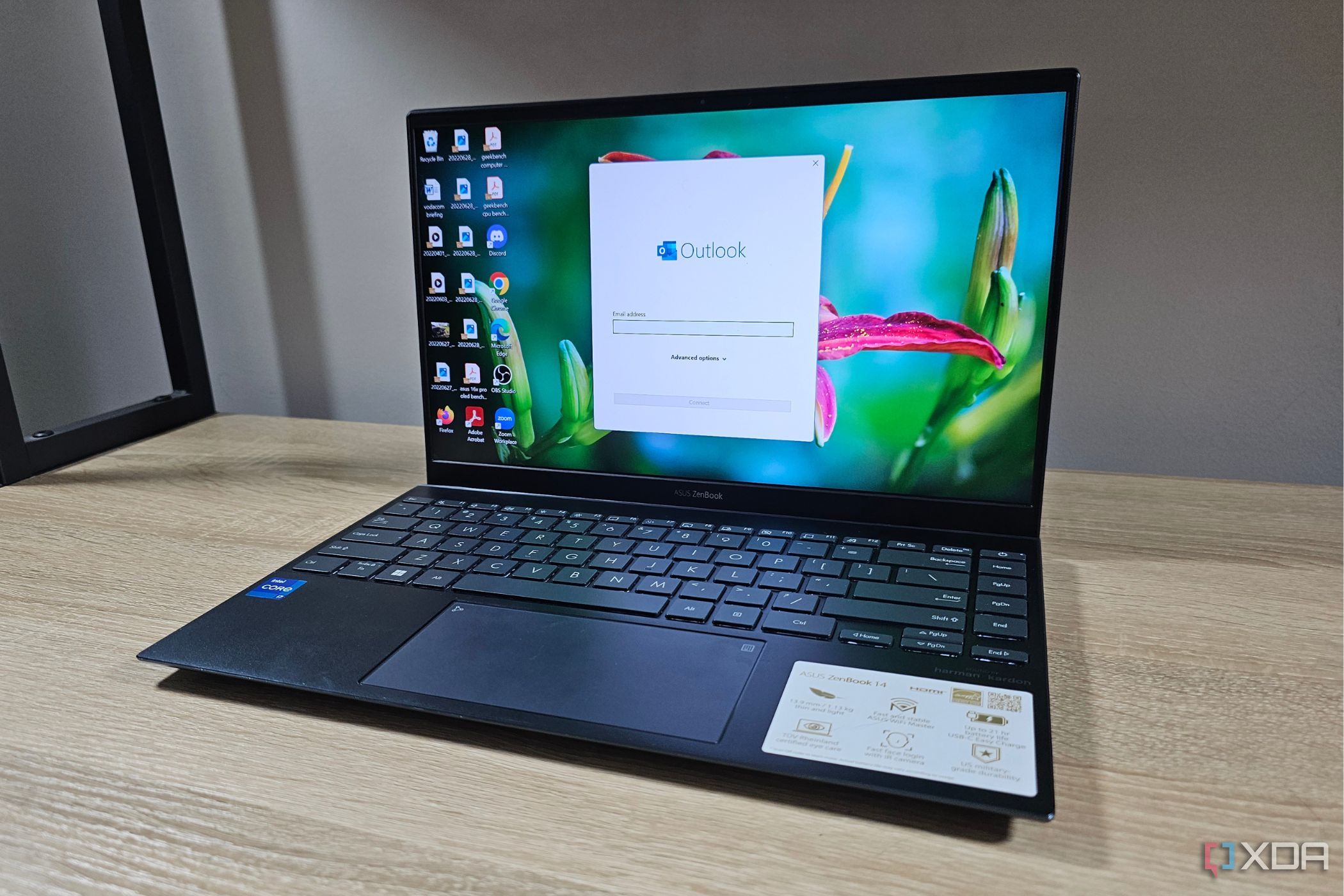
Related
4 reasons I encrypt email in the Outlook app on Windows 11
When you have sensitive information to send, you can encrypt emails in the Outlook app.
2 Message control
Set auto-destruct expiration dates for messages
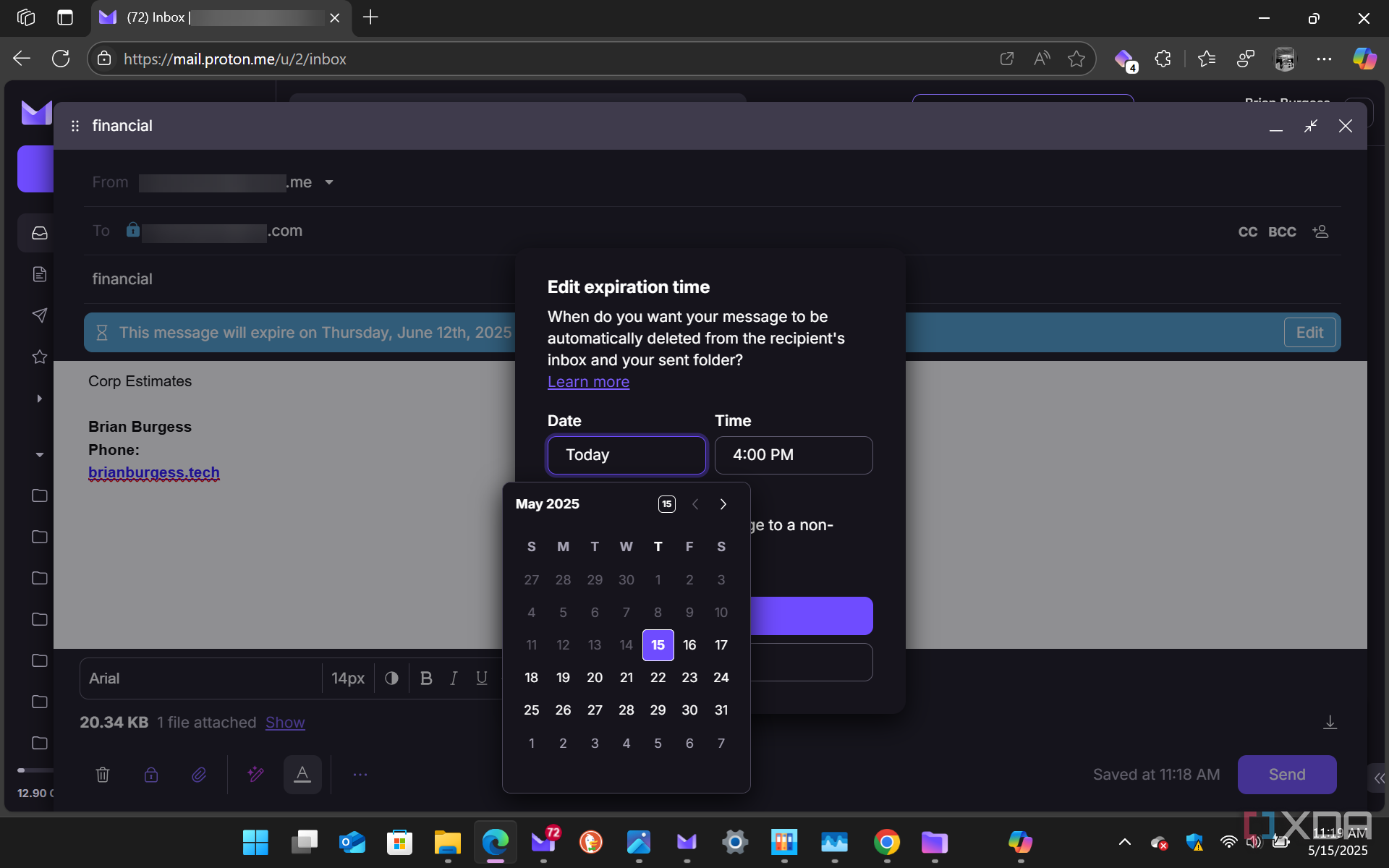
Another benefit of creating a password-protected message is setting an expiration date. The message will self-destruct if the recipient doesn’t read it within the set time limit. This feature is another security layer that protects your message data by further reducing unauthorized access if the password is compromised. Only the intended recipient should be able to read the message and access the file, and adding a password or PGP key allows you to ensure it is only being read by the intended recipient.
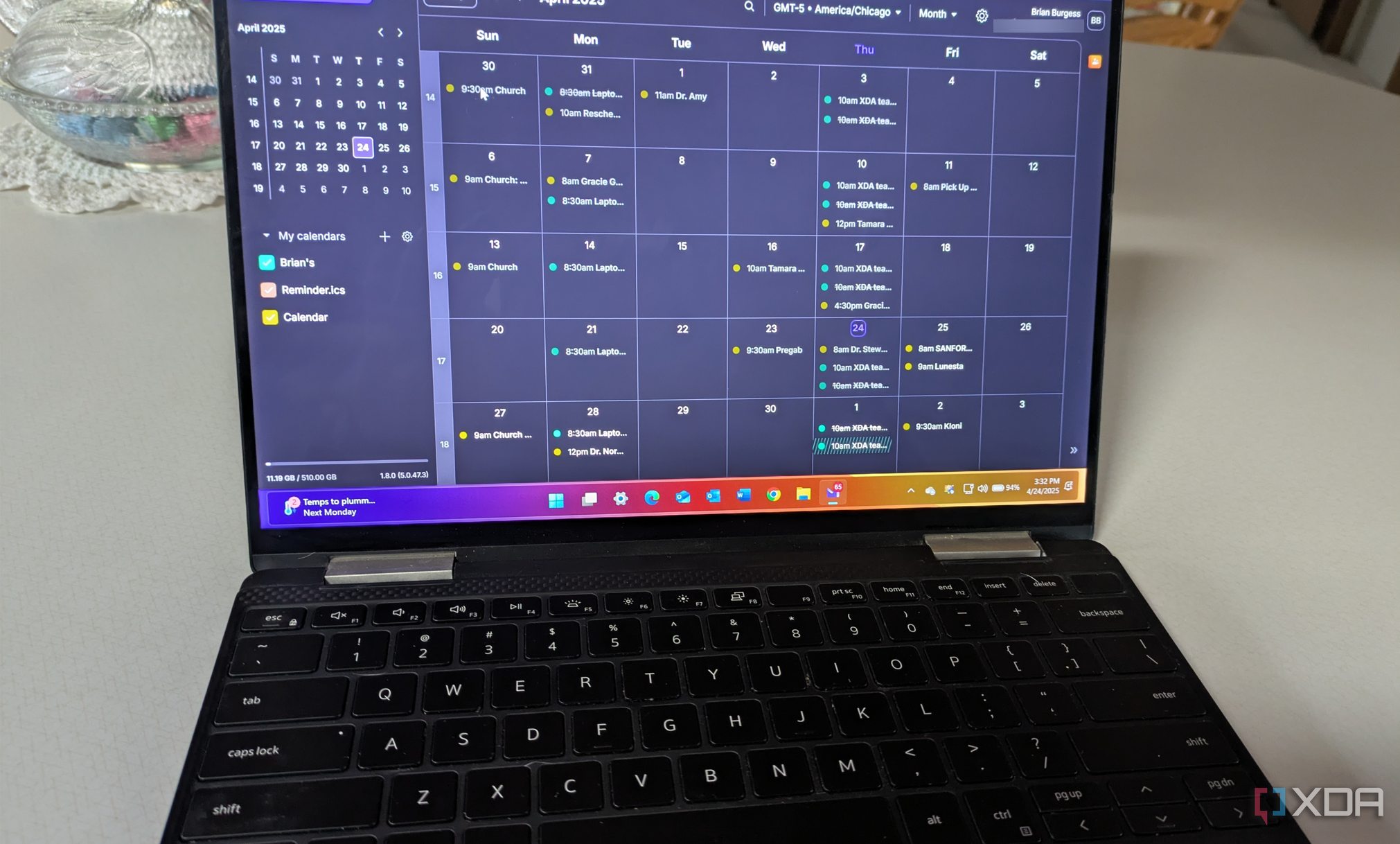
Related
I imported my Outlook calendar to Proton and you should too
I'm moving to the Proton ecosystem from Microsoft and importing my Outlook calendar was a cinch.
1 Simplicity
If you have a sensitive email to send to a non-Proton account, password-protecting it for an extra layer of security is straightforward. Compose your mail like normal and attach any files if needed. Click the lock icon in the lower left toolbar. Choose a password, hint, expiry date, and whether the mail is going to be a non-Proton user. Once everything looks good, hit the Set button and click Send.
When the person receives the message, they will be pointed to a Proton site where they can enter the password you used to secure your email message. So, the email and attachments never leave Proton’s servers. The recipient can send you a secure reply, letting you know they received it. It’s also worth mentioning that a password-protected email on Proton will automatically expire after 28 days. However, you can set the time until they can read it. If it is urgent enough, I set mine to 72 hours unless more is necessary.
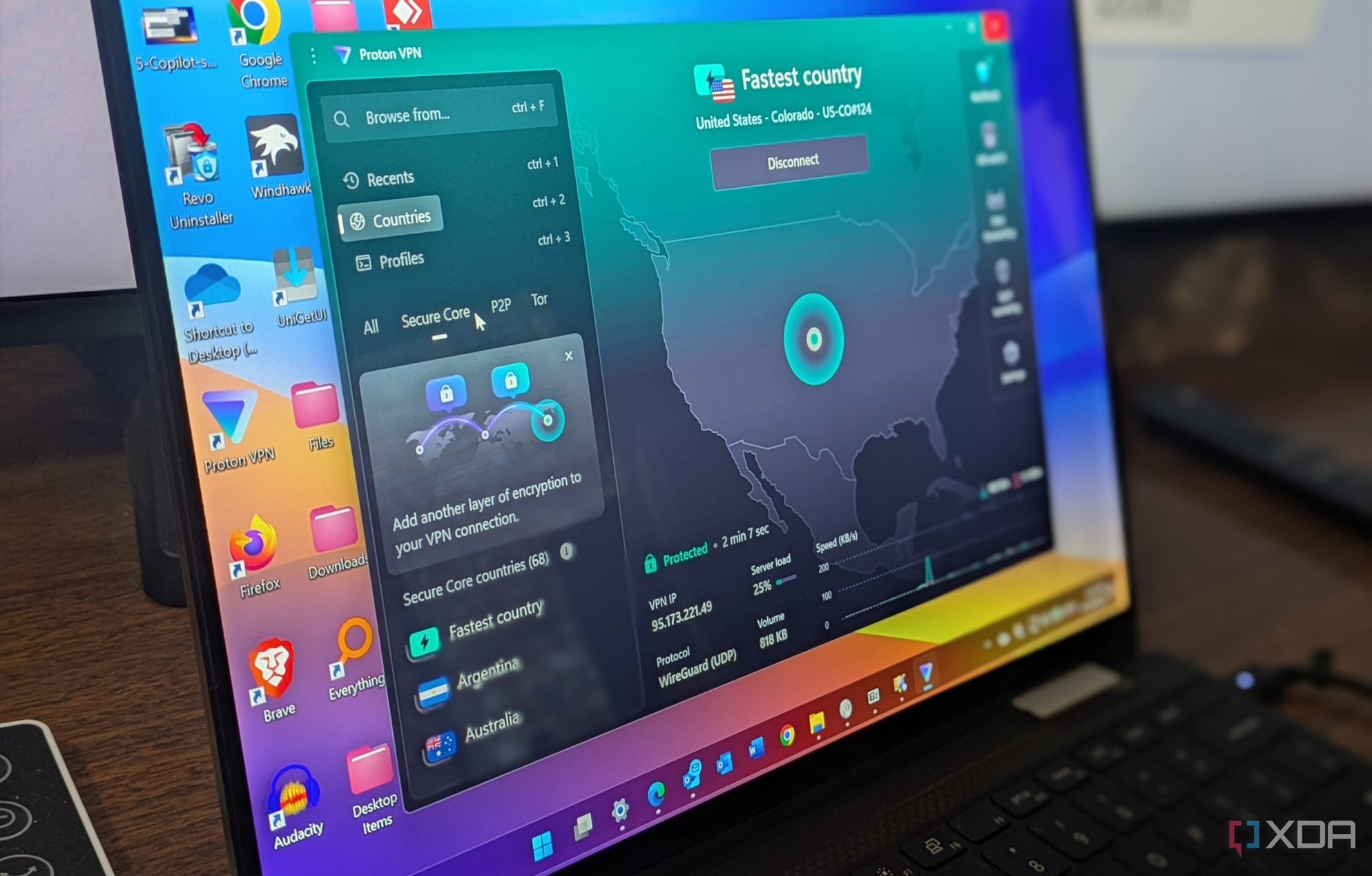
Related
5 reasons I chose Proton VPN over all others and you should too
Proton VPN is an open-source and cross-platform VPN I use to secure my internet connections.
There are several reasons to password-protect your email message in Proton. Not only is your message protected with proper end-to-end encryption, but you can add additional features and layers of security to ensure it’s safe, like your own PGP key. However, I am not sending classified information, and I feel confident with the extra security layer of password protection. Also, I give my important contacts a heads-up on using Proton Mail.
Ironically, when I started using it, many of my messages would wind up in their Spam folder. Many free email services don’t play well with Proton. But after some education, they understood and moved to the Proton infrastructure.
.png)

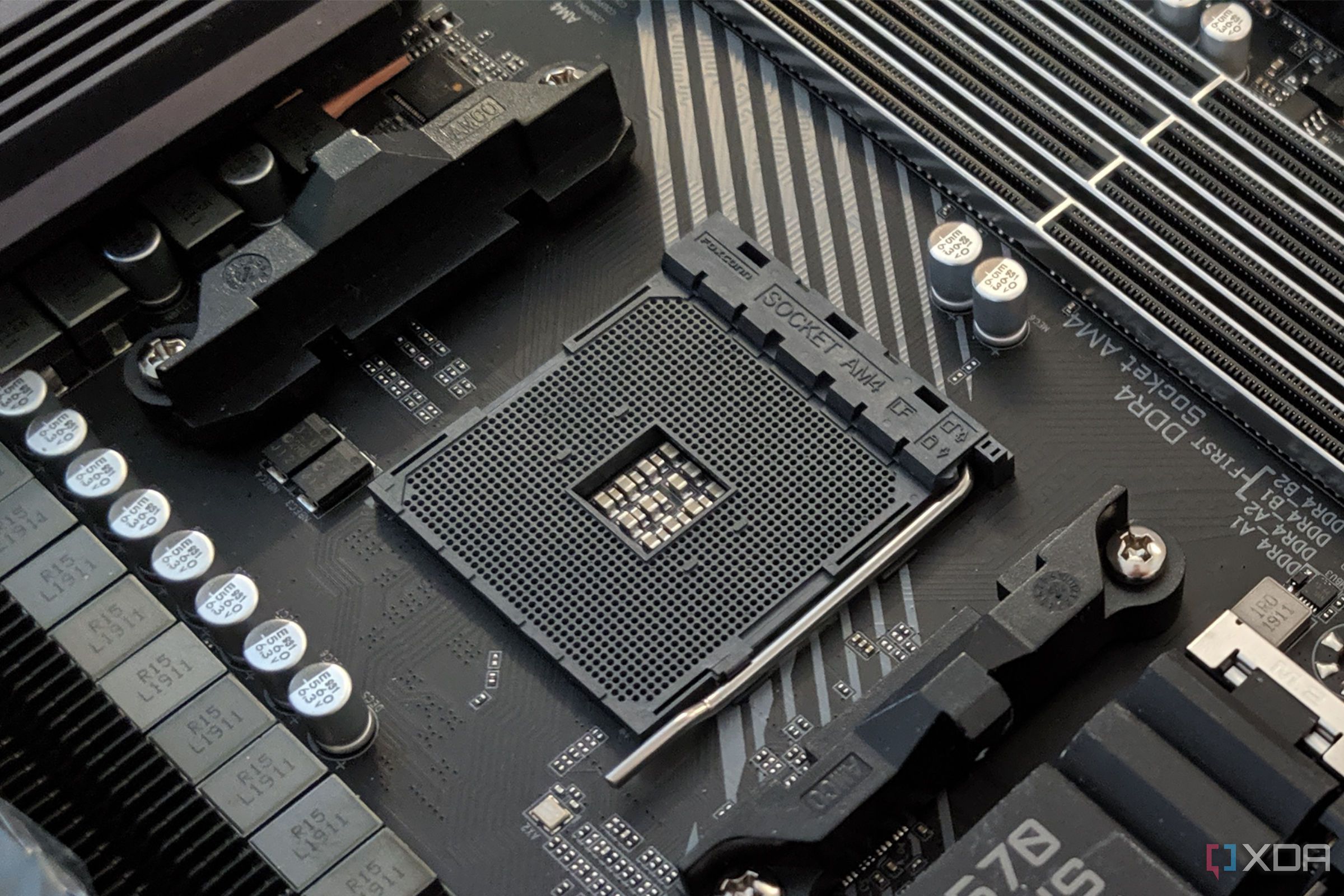








 English (US) ·
English (US) ·